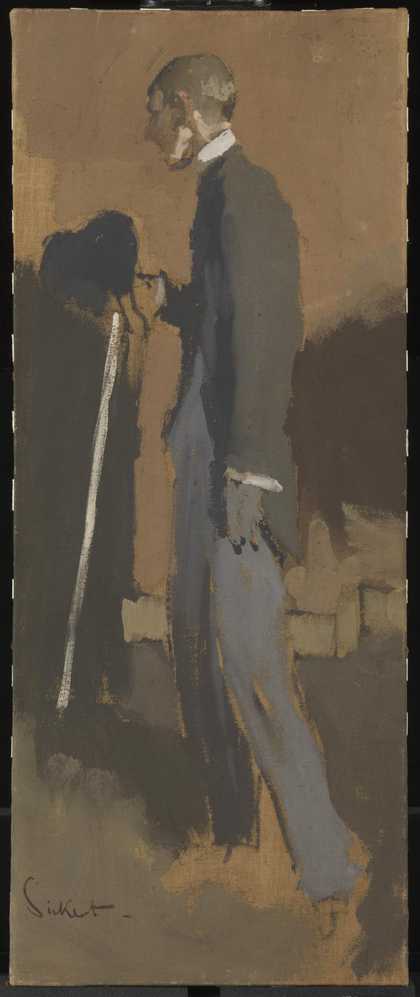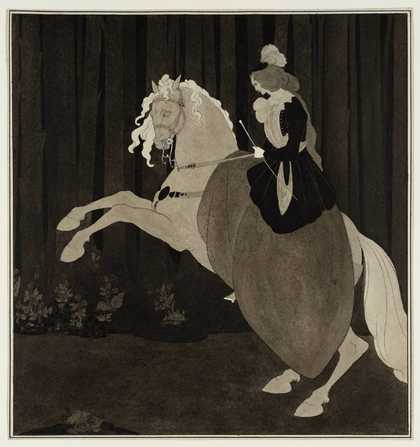
Walter Richard Sickert
Aubrey Beardsley (1894)
Tate
The Trustees, having recently acquired Caprice, the only known oil painting by Aubrey Beardsley, decided to mark the occasion of its exhibition by holding a small loan collection of his drawings, his work, unfortunately, not being represented, as yet, in the permanent collection.
The collection is arranged in the main, chronologically, so as to show the development of his genius, which was exceptionally rapid.
Although Beardsley was a very original artist, he was intensely sympathetic to art movements around him, and he was influenced throughout his life by literature. In addition to this, his art was growing every year, almost every month, and so drawings which are only separated in time by six or twelve months differ greatly in style, technique and aesthetic intention. It is hardly an exaggeration to say that Beardsley’s art matured and progressed in one year as much as that of many artists in ten years. His first important published drawing, Hamlet Patris Manem Sequitur, appeared in November 1891, and the last drawings he made were issued several months after his death in November or December 1898. Thus, all the drawings which need be seriously taken into consideration were executed between the end of 1891 and the beginning of 1898, a period of less than seven years.
Beardsley’s early work as may be seen in the Procession of Jeanne d’Arc and Adoramus Te, was much influenced by Burne-Jones, Simeon Solomon and the Florentine painters, but this was succeeded in his Salome period by influence from Japanese art and Whistler, and later from French Rococo in The Savoy period, but while he borrowed freely, Beardsley always made what lie purloined his own by the right of genius arid no one is less of a ‘pastichist.’ He came at a moment when Pre- Raphaelitism was flickering out in the Aesthetic Movement and there was a morbidity in the atmosphere which his own hectic ill-health probably accentuated. In the febrile intensity of his imagination Beardsley may be compared with El Greco, the gifted genius of another and greater decadence, and the Art Nouveau movement, which perhaps fortunately spread more widely on the Continent of Europe than in England owed to him not a little of such inspiration it as it had.

